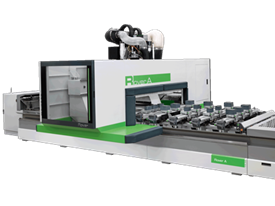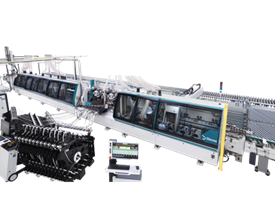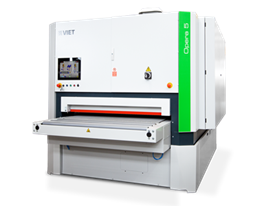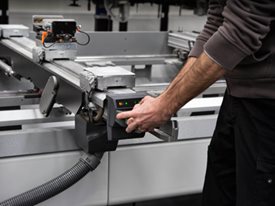If you work in a warehouse or another type of facility, you're probably dealing with a myriad of products and resources. Because warehouse storage space is costly, it makes sense to maximize your warehouse storage capacity to lower carrying costs and improve material handling efficiency. Making a few adjustments to your warehouse operations can result in high-cost savings.
One of your most critical responsibilities is to ensure that these materials are not destroyed during storage and that they pass through your various production processes as soon as possible. Your organization is more likely to damage products and fall behind on productivity targets if you don't have the right equipment and methods handy.
To be competitive in your industry, you'll need material handling equipment (MHE) designed to handle your materials and tailored for increased speed. Learn more about the many types of MHE and why they're so important to have in your warehouse when you're looking to install material handling equipment and systems.
What Is Material Handling and How Does It Work?
Material handling refers to the storage, control, protection, and movement of things and materials throughout warehousing, consumption, manufacture, disposal, and distribution. A number of equipment and methods are available to aid with material handling, ranging from manual to fully automated options. To guarantee that a supply chain runs properly, it is necessary to use material handling equipment.
Benefits of Material Handling Equipments:
1. Minimize product and material waste
2. Costs of Material Handling are Reduced
3. Increased Storage Capacity
4. Improved Working Conditions and Employee Safety
5. Material Flow Improvements
6. More evenly distributed work
When it comes to maximizing your facilities, these warehouse space optimization tactics are only the tip of the iceberg. Now is the time to find the right machine handling equipment for you! .
Material-handling equipment for warehouses is available in a wide range of sizes and designs. The four basic categories of material handling equipment (MHE) to be understood to comprehend what it is and how it is used:
- Equipment for storage and handling
- Automated systems
- Forklifts and industrial trucks
- Material handling in bulk
Understanding these four important areas will help you identify the types of equipment that best meet your company's needs. The first step in designing an efficient material handling system is to understand your options.
1. Equipment for Storage and Handling
When commodities are not in use, storage and handling equipment is utilized to keep them safe and secure. They can also be employed to keep items in place at the beginning or end of a manufacturing process. This device can be used for a short or long period of time, depending on the demands of the user. It's important to keep in mind that a lot of this equipment isn't automated. Automated storage and handling equipment is referred to as "engineered systems" or "automated systems."
In material handling, racking, shelves, and pallets are common forms of storage equipment. Warehouses and other enterprises may store materials in a neat and orderly manner thanks to these features. The material is commonly stored on the equipment while it prepares to enter the production cycle or as it waits to be delivered. Storage, handling, and distribution are key components of a company's manufacturing process.
Some of the tools are as follows:
Among the several types of racks used in facilities are sliding racks, pallet racks, push-back racks, and drive-through or drive-in racks. These racks make it easier to access your goods while also saving space on the floor.
Shelves, bins, and drawers are available in a variety of sizes and styles. Shelves are one of the most frequent and basic forms of storage devices. Smaller items can be stored in an organized manner with the help of drawers and bins built into the shelving.
Stacking frames: As the name implies, stacking frames can be stacked on top of each other like blocks. Their main advantage is that they allow palletized material that is fragile or crushable to be stacked on top of one other. This method saves space while keeping the materials organized.
2. Computerized Systems
Engineered systems, which are also referred to as automated systems, are fully automated. They aid in the storage and transportation of materials. Rather than being a single piece of machinery, an automated system is frequently made up of several pieces.
The ability to connect to a facility's computer network is one of the advantages of an AR/RS. A company may easily keep track of its inventory with this link. The AR/RS can be linked to several stages of a facility's process to make everything more automated.
The following are some of the most common types of automated systems:
Belt conveyors
A conveyor belt is a belt that is powered by a motor and is part of a conveyor system. Transportable items are simply placed on one end of the belt, and the motorized mechanism transports them to their destination.
Robotic delivery systems
Robotic delivery systems are machines that move objects and supplies across a facility. They're automated to make life easier for the workers. Typically, these systems are employed to aid in the transportation of things down a production line.
3. Industrial Trucks and Forklifts
Forklifts and industrial trucks are two types of equipment that can be used for a variety of tasks. All of the items have one thing in common: they all help in transportation. Industrial vehicles and forklifts are available in a variety of sizes. Equipment that is small enough to be operated by hand as well as equipment that is large enough to be driven are available.
To make the transfer process easier, industrial vehicles usually incorporate attachments such as insertable flat surfaces or forks. These attachments are designed to go under pallets for easier pickup.
Hand trucks
A hand truck or trolley is a simple two-wheeled hand-operated truck or trolley with a metal frame and toe plate. Hand trucks are meant to make moving tiny goods easier. Some are foldable and can be stored flat when not in use.
Pallet jacks
Pallet jacks are a very simple form of a forklift and are one of the most frequent types of warehousing equipment. They're used to move materials throughout a warehouse and are typically pushed manually, however powered options are available.
Order Picker
An order picker is a machine that elevates workers off the ground and allows them to reach products on high shelves that are difficult to reach.
Sideloaders
Sideloaders, as opposed to the front-positioned forks of a typical forklift, are used to load and unload from the side of the machine. Sideloaders are ideal for tight aisles and openings, although they are less nimble than forklifts.
Hand trucks
A hand truck or trolley is a simple two-wheeled hand-operated truck or trolley with a metal frame and toe plate. Hand trucks are meant to make moving tiny goods easier. Some are foldable and can be stored flat when not in use.
4. Bulk Material Handling
Bulk material handling equipment is machinery for storing, controlling, and transporting bulk materials. The items are kept in a haphazard manner. This equipment is typically used to handle beverages, metals, minerals, food, and liquid.
The following are some examples of material handling equipment:
Stackers
Stackers are big material handling components that transfer products from one place to another. Stackers are machines that automatically stack commodities and products into stockpiles.
Reclaimers
A reclaimer is a large machine that goes through your stockpile and removes items.
Bucket and grain elevators
Bucket elevators are also known as grain legs. These are used for transporting bulk materials in a vertical direction.
Grain elevators are used to transport and store materials as they move along a production line.
Hoppers
Hoppers are funnel-like devices that are used to dump or pour things into containers. They can close the gap and keep the items until they're ready to release them.
Silos
A silo is a material-storage tower that is commonly found on farms but can be used in a number of situations. Silos are commonly used to store grain, woodchips, coal, sawdust, and food.



.png)





 Worldwide
Worldwide
 Italia
Italia
 United Kingdom
United Kingdom
 Россия
Россия
 France
France
 中国
中国
 Asia
Asia
 Deutschland
Deutschland
 España
España
 Schweiz
Schweiz
 North America
North America
 India
India
 Australia & New Zealand
Australia & New Zealand
 Türkiye Cumhuriyeti
Türkiye Cumhuriyeti
 Middle East
Middle East
 Brasil
Brasil